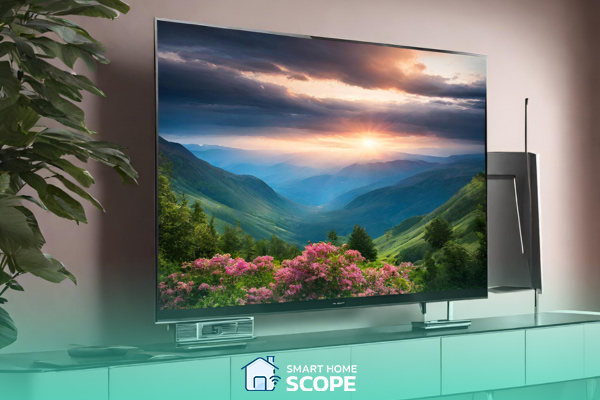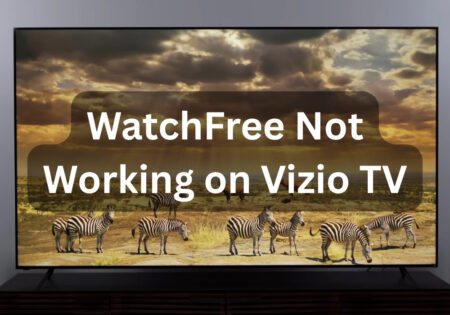The Sony 850D vs Samsung KS8000 comparison is often an argumentative topic among users. In this article, I’ll leverage my experience with both models to completely compare every aspect of these two TVs with each other. At the end of this essay, you’ll know which model to choose based on your specific needs.
Sony 850D vs Samsung KS8000: brief overview
| Specification | Sony 850D | Samsung KS8000 | Winner |
| Screen Sizes | 55, 65, 75 inches | 49, 55, 60, 65, 70 inches | Samsung KS8000 (more options) |
| Resolution | 4K (3840 x 2160) | 4K (3840 x 2160) | Tie |
| Panel Type | LED | SUHD Quantum Dot LED | Samsung KS8000 (Quantum Dot) |
| HDR Support | Yes (HDR10) | Yes (HDR10) | Samsung KS8000 (better performance) |
| Picture Processor | 4K HDR Processor X1 | Quantum Dot Color | Samsung KS8000 (vibrant colors) |
| Refresh Rate | 120Hz (Native) | 120Hz (Native) | Tie |
| Smart TV Platform | Android TV | Tizen OS | Samsung KS8000 (user-friendly) |
| Voice Assistant | Google Assistant (winner) | Bixby | Sony 850D (Google Assistant) |
| HDMI Ports | 4 | 4 | Tie |
| USB Ports | 3 | 2 | Sony 850D (more ports) |
| Wi-Fi | Yes | Yes | Tie |
| Bluetooth | Yes | No | Sony 850D (Bluetooth support) |
| Ethernet | Yes | Yes | Tie |
| Audio Output | Bass Reflex Speaker | Down Firing + Bass Reflex Speaker | Sony 850D (better sound quality) |
| Sound Technologies | ClearAudio+ | Dolby Digital Plus | Sony 850D (ClearAudio+) |
| Input Lag (Gaming) | Higher compared to KS8000 | Lower | Samsung KS8000 (better for gaming) |
| Design | Slim design with a thin bezel | Ultra-slim, bezel-less design | Samsung KS8000 (premium design) |
| Build Material | High-quality plastics and metals | Metal frame, premium build | Samsung KS8000 (premium build) |
| Remote Control | Standard remote | Smart remote with voice control | Samsung KS8000 (smart remote) |
| Price Range | Generally more affordable | Generally higher priced | Sony 850D (better value) |
Sony 850D vs Samsung KS8000: Design and Build Quality
Aesthetic Differences
The sleek, contemporary style of the Sony 850D blends in perfectly with any living area. Its thin bezel and sleek stand make it a stylish addition to your home. On the other hand, the Samsung KS8000 has a more understated appearance thanks to its nearly bezel-free frame and distinctive Y-shaped stand. It’s an eye-catching standout item.
Build Materials and Durability
Regarding construction materials and robustness, the Sony 850D and the Samsung KS8000 exhibit the manufacturers’ dedication to excellence. The Sony 850D feels sturdy and long-lasting because of the way it is built, which combines premium metals and polymers. Robust in design, the rear panel reduces flex and safeguards interior components. The aluminum stand contributes to the TV’s overall elegant look while offering solidity.
In contrast, the Samsung KS8000 adopts a slightly different strategy. The device boasts a refined appearance featuring a frame that exudes a luxurious atmosphere. The TV’s structural stability is strengthened by the use of metal, which also improves its visual attractiveness. Despite being more visually striking than the Sony 850D, the KS8000’s display is thinner, therefore during setup, it must be handled carefully. Though it might not be as sturdy as Sony’s, the stand, which has a distinctive style, is likewise composed of metal and supports the TV adequately.
In conclusion, both TVs are made to last, but whereas the Samsung KS8000 emphasizes a premium, svelte design with a somewhat more sensitive display, the Sony 850D delivers more conventional durability.
Also Read:
Best Samsung Smart TVs in 2024
Display and Picture Quality

Screen Size and Resolution
Both the Samsung KS8000 and the Sony 850D provide a range of screen sizes to accommodate various room sizes and viewing styles. Whereas the Samsung KS8000 is offered in 49, 55, 60, 65, and 70-inch sizes, the Sony 850D is offered in 55, 65, and 75-inch versions. This variety ensures there’s a size that fits exactly in each living area, no matter how big or tiny.
In the Sony 850D vs Samsung KS8000 comparison, we witness that both models provide 4K (3840 x 2160 pixels) resolution, meaning that exceptional detail and clarity is delivered by either one (it’s four times than Full HD). These two models leverage their 4K capability to ensure a premium experience is brought to you when watching TV.
Customers have more alternatives because of the two versions’ different screen sizes. With its extra 49- and 60-inch possibilities, the Samsung KS8000 offers options for anyone with certain size preferences or limitations.
Color Accuracy and Contrast
The Samsung KS8000 is perfect for people who want a more dynamic picture because of its Quantum Dot technology, which produces colors that are more brilliant and saturated. The TRILUMINOS display of the Sony 850D, on the other hand, produces richer colors that are realistic and lifelike. Due to its better edge-lit LED screen, the KS8000 offers a minor advantage in terms of contrast with deeper blacks.
HDR Performance
High Dynamic Range (HDR) provides more detail in both the brightest and darkest areas of the image, improving the viewing experience. This is where the Samsung KS8000 excels since it can display a greater range of brightness and contrast, increasing the impact of HDR content. Although the Sony 850D’s performance is a little bit more muted than the KS8000’s, it still supports HDR.
Smart TV Features

Operating Systems and Interfaces
With its Android TV operating system, the Sony 850D provides access to a vast array of Google Play Store apps and services. Although occasionally a little slow, its UI is easy to use. With the Tizen OS installed, the Samsung KS8000 offers a seamless and user-friendly interface. Its speed and responsiveness make navigating a snap. The Samsung KS8000 leads in terms of speed and simplicity of use.
App Availability and Functionality
Both TVs come with a ton of apps, including well-known streaming services like Netflix, Hulu, and Amazon Prime Video. But, because the Sony 850D can access the Google Play Store, it has a wider selection of apps, and the KS8000 supports fewer apps overall, but its optimized apps tend to work better. In terms of app variety, Sony is superior, but Samsung is superior when it comes to app performance.
Voice Control and Smart Home Integration
The smooth integration of the Sony 850D with other Google Home devices is made possible by its support for Google Assistant. Strong smart home integration is another feature of the Samsung KS8000, especially when it comes to integrating with other Samsung smart products and its Bixby speech assistant. Both TVs are good in this area, but the Sony 850D could be more desirable if you’ve already committed to the Google ecosystem.
Sony 850D vs Samsung KS8000: Connectivity Options

HDMI and USB Ports
Multiple HDMI and USB ports are included in both variants to accommodate different connectivity requirements. While the Samsung KS8000 has four HDMI ports and two USB ports, the Sony 850D has four HDMI ports and three USB ports. For those who want more connectivity choices, the Sony 850D has a little advantage thanks to its extra USB port.
Wireless Connectivity Features
Both versions come equipped with standard Wi-Fi and Bluetooth, making it simple to connect to connected devices and the internet. Notable among other things is the Sony 850D’s Bluetooth compatibility, which enables direct pairing with a large number of Bluetooth devices.
Compatibility with Other Devices
A wide range of devices, such as Blu-ray players, sound systems, and game consoles, are compatible with both TVs. On the other hand, consumers with more recent devices or those looking to future-proof their investment may find the Samsung KS8000’s HDMI ports more tempting as they support the most recent HDMI standards.
Also Read:
Best Sony Smart TVs in 2024
Sound Quality
Built-in Speakers and Audio Technologies
Bass Reflex speakers, which are included with the Sony 850D, produce a rich, clear sound. Conversely, the Samsung KS8000 boasts down-firing speakers with passable sound quality, however, it may not have the same depth as the Sony 850D. In terms of integrated speaker quality, the Sony 850D has a minor edge.
External Sound System Compatibility
These versions work with a variety of soundbars and AV receivers and support external sound systems. But the Sony 850D’s sound processing features, such as Clear Audio+, improve the sound quality, particularly when used in conjunction with external audio systems.
Also Read:
Best Settings for Sony Soundbar
Gaming Performance

Input Lag and Refresh Rate
Input latency and refresh rate are essential for a seamless gaming experience for players. Gamers love the Samsung KS8000 because of its exceptionally minimal input latency. Additionally, its 120Hz refresh rate ensures crisp animation in fast-paced games with no perceptible blur. The Sony 850D features the same refresh rate as the monitor but with a somewhat increased input latency. The Samsung KS8000 is the undisputed victor in this category for gamers.
Gaming Features and Compatibility
The HDR gaming feature on both TVs improves the visual quality of games. However, the enhanced contrast and brightness levels of the Samsung KS8000 offer a more engaging gaming experience. Though capable, the Sony 850D falls short in terms of gameplay fidelity and detail when compared to the KS8000.
Price and Value for Money
Comparison of Prices
Pricing-wise, there’s typically a discernible difference between these two models, with the Sony 850D frequently being the less expensive choice. Before making a choice, it’s important to verify the current pricing because they might change depending on factors like size and sales.
Long-term Value Considerations
With their superior 4K resolution and HDR compatibility, both TVs have great long-term value and will continue to be useful as 4K material becomes more widely available. For individuals who place a higher priority on image quality and gaming performance, the Samsung KS8000 may be a better option. However, those searching for a more adaptable TV will find the Sony 850D to be a wonderful deal due to its larger app selection and improved sound quality.
Sony 850D vs Samsung KS8000: Pros and Cons Summary

Sony 850D
- Pros: Excellent sound quality, strong Android TV platform, accurate color reproduction, extra USB port.
- Cons: Less colorful HDR performance and increased input latency for games.
Samsung KS8000
- Pros: Excellent HDR and contrast, responsiveness and user-friendliness of Tizen OS, little input latency.
- Cons: Fewer applications than Sony; sound quality is passable but not great.
Conclusion
In conclusion, I can say while both models are great, the decision between Sony 850D vs Samsung KS8000 depends on your particular needs. Do you value high-quality audio and true-to-life colors on your TV? Then go with Sony 850D; are you into gaming and vivid images? Buy Samsung KS8000. So, write down your requirements and choose the suitable option for yourself!
FAQs
Which TV is ideal for viewing films in a dimly lit space?
With its improved black levels and contrast, the Samsung KS8000 is a better choice for viewing movies in a dimly lit space. Because of its ability to display darker blacks, it provides a more interesting visual experience.
Can I play PC games on these TVs?
Indeed, you can play PC games on both the Samsung KS8000 and the Sony 850D. Nonetheless, the gaming experience is more fluid with the Samsung KS8000 due to its reduced input lag.
Are these models appropriate for light-colored rooms?
While both models function well in bright environments, the Samsung KS8000 offers a little advantage because of its greater brightness settings and superior ability to manage reflections.










